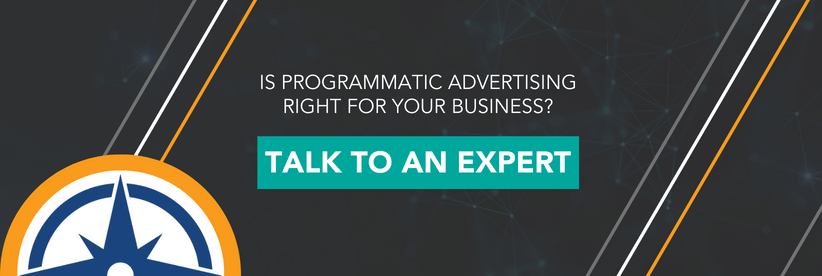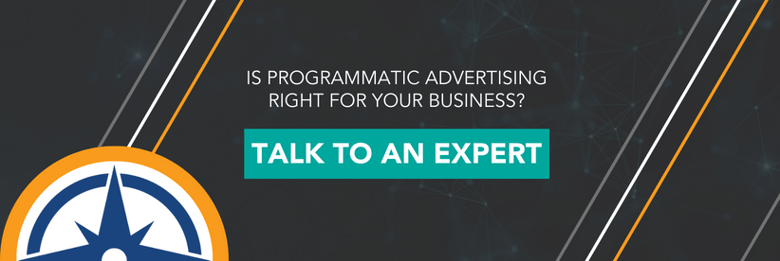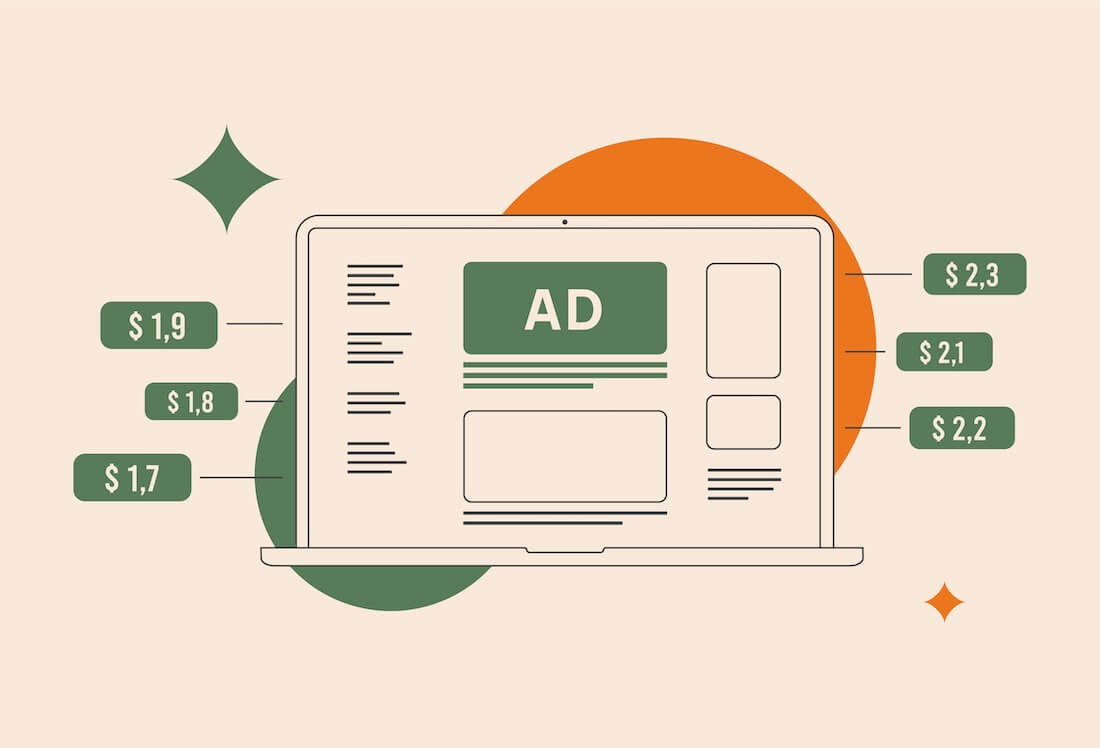author
David Aviles
When it comes to creating competitive and cutting-edge marketing campaigns for your clients, it’s crucial to understand all of the available advertising opportunities. Technological developments have rapidly advanced the ways in which advertisers and publishers can circulate advertisements. At times, these developments can be difficult to keep up with, but continuous education is the key to taking your digital marketing strategies to the next level.
Programmatic advertising encapsulates the intersection between software technology and marketing, so it can seem complicated. If you are unfamiliar with programmatic advertising, now is the time to learn. Fortunately, we’ve made it simple with this complete beginner’s guide to programmatic advertising.
What is Programmatic Advertising?
Put simply, programmatic advertising uses algorithmic software to buy digital advertising space. Programmatic advertising is a more efficient alternative to traditional methods of purchasing advertising space. Traditional ad buying methods demanded much more manual work for marketers since marketers had to reach out to individual platforms with their advertising proposals, negotiate contracts with each platform, monitor the payment methods, and create ad tags. Programmatic advertising eliminates most of the manual steps of the process by using software to purchase advertising space. Not only does programmatic advertising allow marketers to purchase ad spaces efficiently, but it also leverages individual data point information, to ensure that ads are shown to the targeted audience.
So, the short answer to “what is programmatic advertising?” is that it is an efficient, automated process of purchasing advertising that utilizes consumer behavioral information to maximize the impact of advertising. It allows advertisements in all formats, like display, video, and audio, to find target audiences quickly and effectively.
Why is Programmatic Advertising Important?
The programmatic advertising industry is already significant, and it is only expected to continue growing, with US advertisers spending 41.2% more on programmatic display ads in 2021. Additionally, in 2022 US advertisers are expected to spend $62.96 billion on programmatic digital video alone.
Along with programmatic advertising allowing advertisers to compete with industry trends, it also streamlines the digital advertising process, allowing marketers to focus their time and efforts on generating new ideas and developing their marketing strategies further. It also drives content to a very targeted audience.
Examples of Programmatic Advertising
Examples can help you get a clear picture of how programmatic advertising can transform your digital marketing strategy. Here are a couple of model examples of programmatic advertising in practice:
 Display Ads
Display Ads
These ads appear alongside the website content. This is a familiar example of programmatic advertising, as these display ads appear as banners or sidebars alongside most free digital content. These ads appear in the ad space when a user clicks on a website or app.
 Native Ads
Native Ads
These are non-disruptive ads that look like the editorial content on a page.
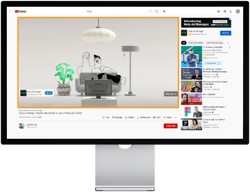 Video Ads
Video Ads
These ads can appear on the side of a website or integrated into a video or streaming service. This can be a Pre-Roll, Mid-Roll, or Post-Roll ad during a video experience on a platform like YouTube or Hulu.
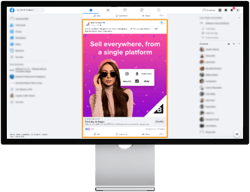 Social Ads
Social Ads
Social ads appear as a user scrolls on a social media platform. This ad will be integrated into their social media feed organically.
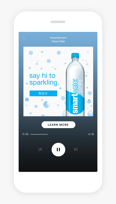 Audio Ads
Audio Ads
These ads are integrated into audio experiences. Most often these appear as a Pre-Roll, Mid-Roll, or Post-Roll audio clip during a podcast episode or ad-break on Spotify.
 CTV/OTT Ads
CTV/OTT Ads
More and more people are canceling traditional cable subscriptions and using Connected TV (CTV) and Over-the-Top (OTT) TV services like Amazon Prime, Roku, and other ad supported streaming services. This allows marketers to advertise to engage with these users at the right place and the right time.
How Does Programmatic Advertising Work?
So, what is programmatic advertising, and how does it work? In order to understand the process, it is necessary to define the relevant terms used in the space.
- Publishers: They own advertising spaces on websites or apps and sell space to advertisers/marketers.
- Advertisers/Marketers: This is likely the group that you fall into. Members in this group have a budget to spend on their digital advertising campaigns to promote their products or brands. They want to efficiently purchase digital advertising spaces and maximize their advertisement’s reach.
- Demand Side Platform, or DSP: This is the advertising technological tool that advertisers use to automatically find ad spaces across publishing sites. DSPs are used by advertisers to purchase the online ad space.
- Supply Side Platform, or SSP: This is the advertising technological tool that publishers use to sell their inventory, or ad spaces. The platform organizes the demand for ad spaces and connects their inventory to numerous DSPs.
- Data Management Platform, or DMP: This is a platform for user data that connects to either SSPs or DSPs to aid in the buying and selling of ad spaces. DMPs collect, store, and analyze audience data. Most of the time DMPs use third-party data from individuals’ previous cookies, browsing history, and purchasing history. This data allows advertisers and publishers to target specific audiences in their advertising campaigns.
- Ad Agency: This is the group that advertisers/ marketers work with to execute their campaigns. The group works for the marketer to get them represented in online advertising by using the DSP.
- Ad Exchange: This is an automated space where advertisers and publishers come together to buy and sell inventory.

Understanding these terms will help you learn what programmatic advertising is and how it works more completely. Now that you’ve learned these terms, here is a summary of how programmatic advertising works:
As a marketer, you have developed a masterful digital marketing strategy for your client. You and your team have created striking digital advertisements, but you need to ensure that your target audience sees them. So, once you have your finished campaign materials, you can either contact your programmatic ad agency or to tap into the programmatic advertising space with a DSP for you, or use a DSP to automate the process of buying ad space for your advertisements.
From there, a DSP (demand side platform) is used to buy ad space from a range of numerous publishers, rather than having to seek contracts with individual publishers. The DSP uses a DMP (data management platform) to ensure that your advertisement is seen by your target audience. The DMP utilizes user information, like their browsing and purchasing history, demographics, location, and digital activity, to optimize the advertisements’ impact. These steps are all completed before any digital advertisements can run, but once they are, the DSPs can begin interacting with the ad exchange space.
Before we get to the ad exchange marketplace, it is important to understand the publisher side of programmatic advertising as well. Publishers have a set amount of ad spaces on their apps or websites. They want to fill these ad spaces so that they can be compensated for the content that they are producing on their online spaces. So, when a user clicks on a URL, for example, the publisher lists the available ad space on their supply side platform, or SSP. In the ad exchange, the request for an advertiser to fill the ad space is complete with the user’s information, like their IP address, device type, and cookies. All of this information is sent to the DSPs.
As previously mentioned, the DSP is prepared with the online advertisements, the target audience information (which is aided by the DMP), and their bid prices for ad space. The DSP processes the data received from the SSP, and if the user fits with the advertisement’s target demographic, it will submit a bid to the ad exchange. The ad exchange scans for malware and ad fraud and runs an automated real-time auction between all submitted bids. The bidding is often referred to as RTB, or real time bidding. Once the winning bid is selected, the ad exchange sends it to the publisher, where the winning advertisement appears in the purchased ad space.
This automated process happens in the milliseconds between a user clicking on a website and their webpage loading their content. The winning advertisement simply appears alongside the website’s content.
This completes the introductory summary of the programmatic advertising process. As you can follow, with programmatic advertising your digital marketing materials travel from your company, to several automated software platforms, to the screen of your perfect target audience.
Types of Programmatic Advertising
There are many complex components that a brief summary of programmatic advertising cannot convey. The different ways that deals can work, and the most common types of programmatic advertising deals in the space are another important aspect to understand. So, what are the types of programmatic advertising?
The type of programmatic advertising refers to the different types of programmatic deals that advertisers and publishers can employ when buying and selling inventory.
The four most common types are:
- Open Marketplace
- Private Marketplace (PMP)
- Preferred Deal
- Programmatic Guaranteed
Open Marketplace
This type of programmatic advertising is sometimes referred to as RTB as well. As previously mentioned, RTB is what commonly occurs when programmatic advertising functions as usual and all advertisers are welcome to bid on a publisher’s inventory. The open marketplace functions with DSPs and SSPs, as previously discussed. The open marketplace allows for advertisers to efficiently place their advertisements on a variety of websites fairly quickly. The benefits of this popular type of programmatic advertising include efficiency, the ability to scale quickly, and ease of use. However, there is an inability to control where your advertisements appear.
Private Marketplace (PMP)
This type of programmatic advertising is sometimes called private auction, invitation only, closed auction, or exclusive auction. This type operates with RTB like the open marketplace, with the only difference being that the private marketplace requires advertisers to be invited to the auction by the publisher to participate. The bidding process operates the same way, it is just in a closed environment. The benefits of this type include an ability to know which websites your advertisements will run on, and bidding against a smaller pool of advertisers for ad space. It also works well if you need to buy ad space that can run specific types of ads, like video or audio. This type of auction does require you to make connections to become a part of the private marketplace, and often the inventory tends to be more expensive than the open marketplace.
Preferred Deal
This type of programmatic advertising is sometimes called spot buying, private access, unreserved fixed rate, or first look. Instead of auctions, this type of programmatic advertising uses direct sales. With this type, advertisers have a deal with publishers that allows them to view ad inventory before other advertisers. These preferred arrangements should include a right of refusal, since advertisers are not obligated to purchase ad space. The benefits of preferred deals include an ability to know where ads are running and a guarantee that you have ad spaces for your ads. However, they can be more expensive and require connections with individual publishers.
Programmatic Guaranteed
This type of programmatic advertising is sometimes called guaranteed, premium, or reserved buy. This type is the most similar to traditional ad buying methods, since it involves an individual relationship with the advertiser and the publisher. The advertiser commits to purchasing ad space from the publisher for a set period of time and a set price. The process is still automated with how the advertisement runs, but there is a set commitment in place. This type of programmatic advertising allows advertisers to know how much inventory volume they have and where their ads will be running, but it does require certain payments, contracts, and resources.
Now You Understand Programmatic Advertising, But Do You Have the Time to Manage It?
Programmatic advertising can add another digital weapon to your growth strategy, but it takes a lot of skill and time to manage. You may decide to dip your feet in this form of paid media and find that it is a very targeted and beneficial strategy for your business. However, in addition to the amount of time you would spend on managing, tweaking, and testing campaigns, you would also need to constantly stay on top of your paid media budget and reporting to determine your ROI.
This is where a digital marketing agency, like Knowmad can help! Knowmad has skilled professionals that can create and execute a paid media plan, including programmatic advertising, for your business. Our specialists will handle everything between the set-up, management, and reporting so that you can do what you do best.
If you are interested in talking more about programmatic advertising or want to learn more about our services, click here to talk to a digital marketing expert at Knowmad today!
.webp?width=900&height=548&name=wyatt-mobile%20copy%20(2).webp)
